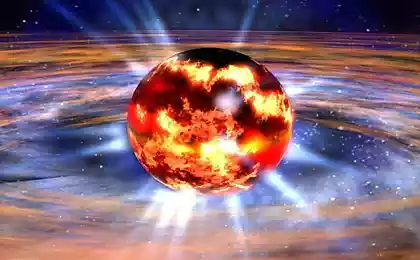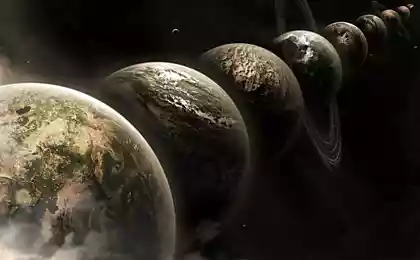472
10 evidence that we still know little to nothing about the Universe

Due to space ships and probes scientists get new data about the Universe and the Solar system.
The website hastens to share with you the latest discoveries in astronomy, which brought scientists to unravel the mysteries of the universe.
Life on Mars is likely still existed

Tireless Curiosity Rover found Martian rocks in the Gale crater traces of boron. The presence of this element indicates that water on the surface of our cosmic neighbor was once suitable for life.
One of the sources of boron on Earth are warm subsurface water with a neutral pH, leaving after drying out the particular veins that contain this chemical element. This fact has given scientists another good reason to search for traces of ancient life on the red planet.
Stephen Hawking has launched a program to search for extraterrestrial life

In the framework of the project it is planned to create the ship on Board of which will be about thousands of miniature spacecraft, which will explore planets suitable for life. The project's goal is to reach alpha Centauri, the nearest star system.
However, to enjoy interstellar flight yet. The creation of the ship will take more than a decade, since the project requires improvement of many existing space technologies. On the idea of the founders of the project of Stephen Hawking and Yuri Milner, vehicle speed should reach 20 % of the speed of light, that will allow you to get to alpha Centauri in just 24 years.
Jupiter and Neptune are attacking the Earth with comets
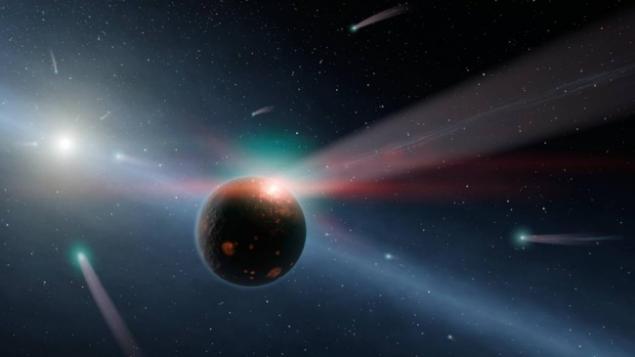
More than 20 years, scientists believed that Jupiter with its massive gravitational field attracts comets and asteroids coming into the Solar system.
However, studies conducted by scientists of NASA, given the opportunity to believe that Jupiter and Neptune, on the contrary, throw objects into the inner Solar system where they may collide with the Earth. By the way, Jupiter is suspected of "send", the planet famous Chelyabinsk meteorite.
On Pluto has liquid water

According to the data obtained by the NASA spacecraft called New Horisont, and the 300-kilometer-thick ice on Pluto is a liquid ocean depth of 100 km.
Apparently, the salinity of the ocean placestogo reaches 30 %, roughly the same as earth's Dead sea. However, information on whether someone is to dwell in underground ocean, scientists still have.
Venus was once inhabited
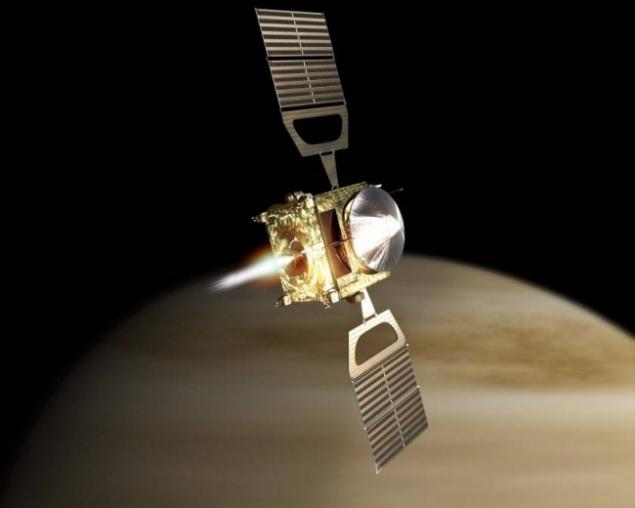
Today Venus is the hottest planet in the Solar system, which, of course, it eliminates the presence of liquid water. However, more than 4 billion years ago the planet had liquid oceans, which existed about 2 billion years. This suggests the existence of life on the second planet from the Sun.
Currently, Venus generates an electric field so powerful that it literally pushes out from the planet, the atoms of hydrogen and oxygen, which then sweeps away the solar wind.
Rings and moons of Saturn is younger than the dinosaurs

As you know, revolve around Saturn's 62 satellites and several rings, consisting mainly of water ice. According to the theory, once the planet had more satellites, but they faced each other, forming larger moon.
The data obtained in 2016, given the opportunity to assume that the ring was not formed simultaneously with the planet about 4 billion years ago. With the help of computer simulation it was found that the rings of Saturn and all its satellites, with the exception of yapet and Titanium appeared when on Earth they lived.
In the Solar system again, you may receive the ninth planet
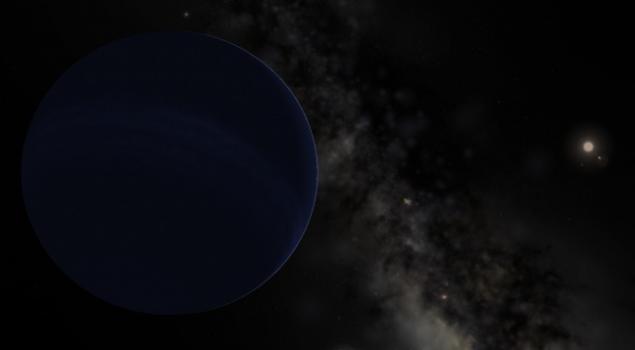
In January 2016 with the help of computer and mathematical modeling it was established that in the Solar system, perhaps there is another planet. By assumption, Constantine batygina and Michael brown (by the way, he's responsible for the demotion of Pluto from planet status), the alleged object is 20 times farther from the Sun than Neptune.
Apparently, the diameter of the planet in 2-4 times higher than the earth, and the mass greater than the mass of the Earth about 10 times. The planet does not yet have a name — her own name she will be able to acquire only after its existence is proven.
In near-earth space there are at least 15 000 large asteroids

The programme, launched by NASA in 2005, it was planned to detect 90 % of the major Solar system objects by 2020. To date, however, scientists were able to detect about 90 % of objects larger than 915 m, and only 27% of over 140 m.
During the research it was discovered about 15 000 objects of different sizes. On average, every week, scientists find no less than 30 space of "inhabitants". For comparison, in 1998, the same number of objects detected per year.
Near the nearest star to the Sun might be a habitable planet

In August 2016, scientists announced the discovery of the planet Proxima b, orbiting the star called Proxima Centauri. The orbital period of the planet around its star is about 11.2 earth days and the surface temperature is about -40 °C.
The planet orbits a star in the so-called habitable zone, that is, it may be suitable for life. Simply put, the distance from the planet to the star is such that the water it is able to exist in liquid form. If the planet be detected magnetic field and atmosphere, we will be able to count on the presence of living organisms. What? To this question scientists have yet to answer.
Scientists obtained evidence of the existence of black holes

On its hundredth anniversary of Einstein's theory of relativity received a priceless gift — opening, affirming one of its main tenets. In February 2016, scientists discovered gravitational waves, predicted by the greatest physicist of the twentieth century.
This event for the first time clearly confirms the presence of black holes. In addition, if scientists will record waves resulting from the Big Bang, we can finally understand the mechanism of the birth of the Universe.
Photo on preview of eso, nasa
See also
11 facts about space, proving that the Universe has for us many surprises
Now anyone with Internet can explore the Universe with NASA
via www.lanl.gov/discover/news-release-archive/2016/December/12.13-first-detection-of-boron.php



